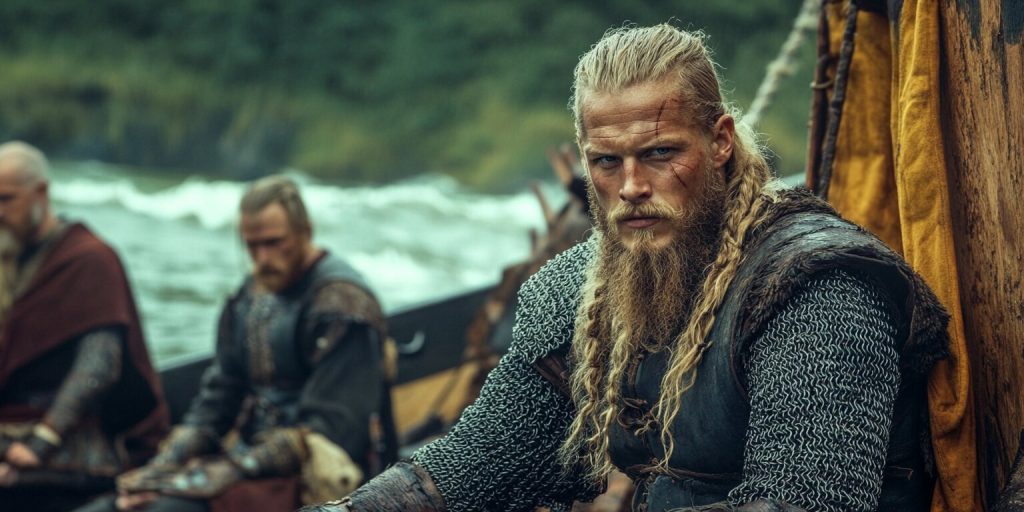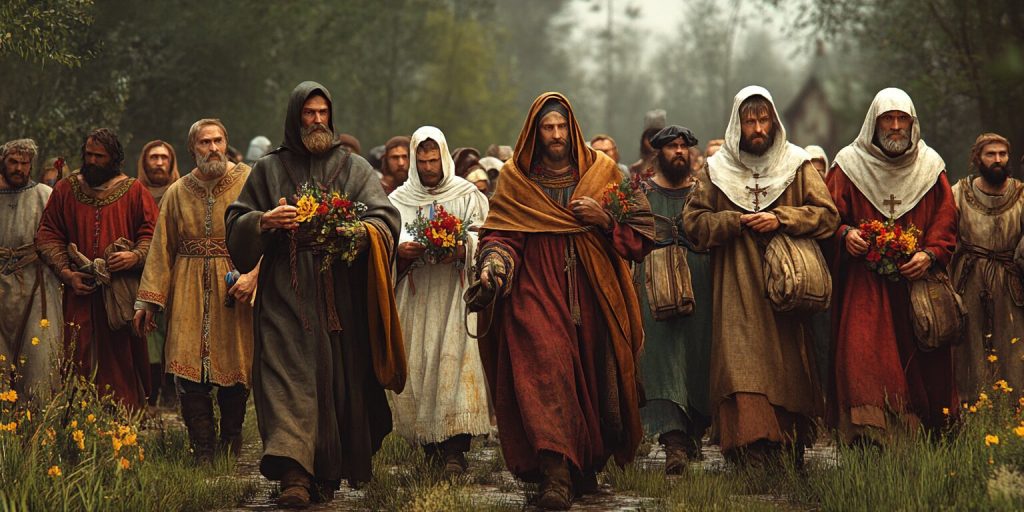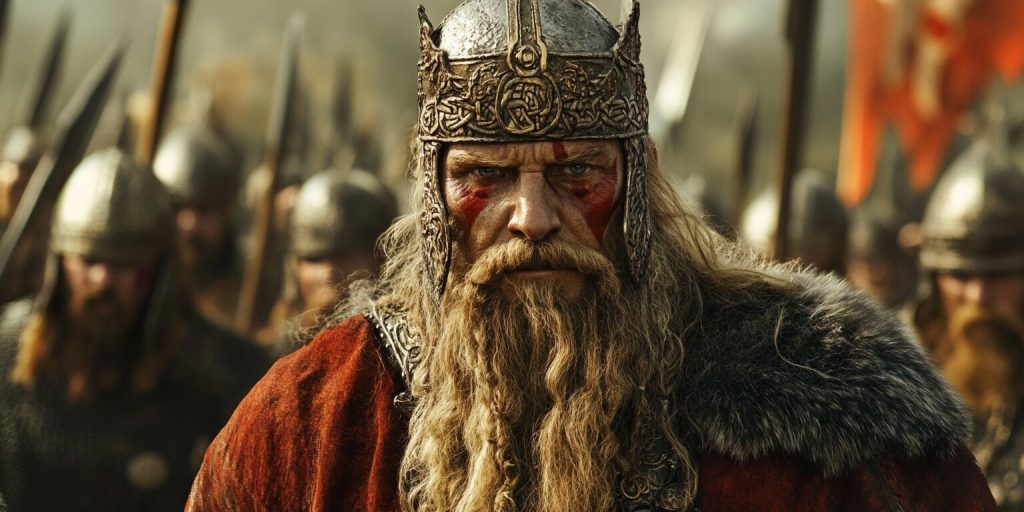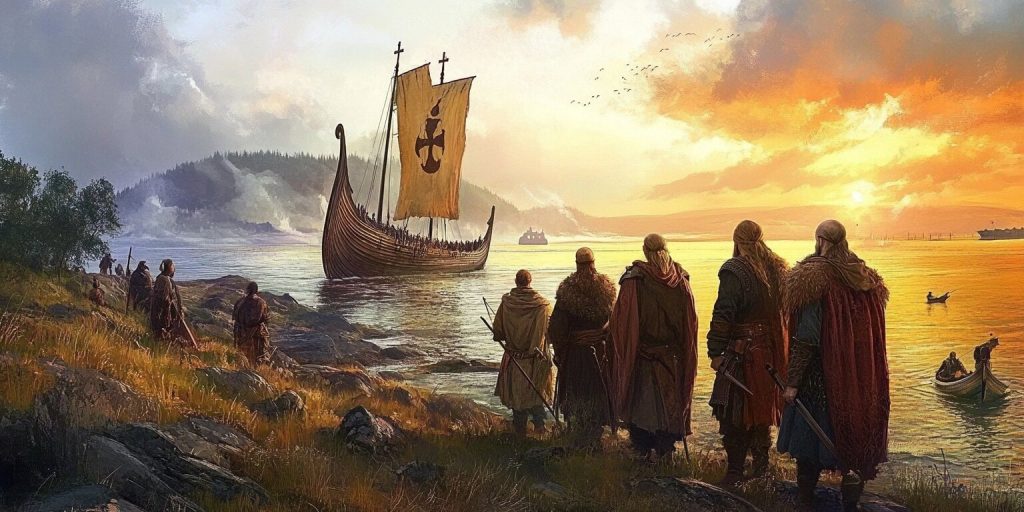Daily Life in the Viking Age, Vikings
Why Did Vikings Convert to Christianity?
The Vikings converted to Christianity, marking a key moment in history. We’ll examine why they made this change based on social, political, and spiritual reasons.
Let’s explore how Vikings and Christianity intertwined. We’ll see what led to the Vikings’ major change in beliefs, which affected their beliefs and ways of life. We`ll also answer a popular question – were the Vikings Christian?
It wasn’t just about religion. It was also about the Christianization of places like Iceland. We want to understand how these warriors took on a new faith in a changing world during the Vikings’ conversion.
The Viking Age: A Brief Overview
The Viking Age lasted from about 793 to 1066 CE. It was a time of great exploration and growth for the Norse people during the Viking period. This era was filled with raids, trade, and settlements that changed much of Europe, marking the Viking period.
Viking society was all about exploring new lands. They used ships called longships to cross the seas and rivers. These ships helped them raid coastal towns and set up trade routes, connecting Scandinavia to distant lands.

Some key events happened during this time:
- The raid on Lindisfarne in 793 CE started the Viking Age.
- The creation of the Danelaw in England in the 9th century.
- Important trips to places like Greenland and North America.
The Viking Age ended with the rise of powerful Christian kingdoms in Europe, greatly changing the political scene. Christianity started to affect Viking beliefs and ways of life, changing Viking society forever.
Today, the Viking Age’s legacy lives on through its rich culture. It includes Norse myths, stories, and traditions that still fascinate people.
Understanding Norse Paganism
Norse paganism was a belief system centered on gods like Odin, Thor, and Freyja. Its rituals and practices were key to worship. As myths and stories passed down through time show, people saw a spiritual world that was part of their everyday lives.
Norse mythology taught about fate and the afterlife. It showed different views on morality and the universe compared to Christianity. Traditional beliefs place a big value on nature and its elements, which shows how much people revered many gods in their lives.
- Rituals were done in sacred places or near nature, showing a link between the gods and the earth.
- Festivals marked the seasons, honoring gods and asking for blessings for growth and wealth.
- Myths taught important lessons on courage, loyalty, and the value of community.
Knowing about Norse paganism was key to understanding the conflicts between the two beliefs as Christianity spread. This ancient tradition deeply influenced Viking society, and its social and cultural values were felt for centuries.
The Encounter with Christianity
The Vikings first encountered Christianity in the late 8th century, and this encounter changed their culture and beliefs. They met Christians during trade, diplomacy, and battles, allowing them to experience new ideas and ways of life.
This curiosity was sparked by Viking leaders learning about Christianity. Christian missionaries came to their lands and started talks. These talks were about sharing knowledge of Christianity and building diplomatic ties under the influence of a Viking king. Important Norse leaders saw the value in these new spiritual ideas.
- The arrival of the first Christian missionaries in Scandinavian territories.
- Interaction with Christian kings who offered alliances and trade benefits.
- Opportunities for exchanging ideas and cultural practices during raids and negotiations.
These meetings were important. History tells us that many Scandinavian leaders were interested in Christianity. They wanted to learn more, sometimes leading them to seek faith in themselves. This started a movement towards conversion to Christianity among the Danes.
The meetings between Vikings and Christians were key moments. They showed that a big change was coming. Viking leaders had to balance old traditions of paganism and Christianity with new beliefs, which led to more Vikings accepting Christianity.
The Role of Christian Missionaries

Christian missionaries played a big part in changing the Vikings in the early medieval period. They helped spread Christianity in Scandinavia, changing the culture of the region.
Among the famous Christian Vikings, Ansgar was a key missionary who worked hard in Denmark and Sweden. He showed how tough it was for missionaries in a land full of Norse paganism.
- Christian missionaries used many ways to win over the Vikings.
- They looked for things they had in common with the Vikings. They wanted to show that Christianity could unite people and make them prosperous.
- Christian priests translated the Bible into the people’s languages, which made it easier for them to understand.
When the Vikings first met Christianity, some were curious. This led to talks and thinking about new ideas. But, the strong Norse traditions made it hard for Christianity to take root amidst the clash of paganism and Christianity.
Still, the missionaries’ hard work slowly changed Viking society. They showed how important missionaries were in spreading Christianity in the Norse lands.
Why Did Vikings Convert to Christianity?
The Vikings decided to become Christians for many reasons. Political alliances were key, as Christian kings wanted to join their kingdoms under one faith. This created strong diplomatic ties that helped both sides.
Becoming a Christian also had big economic benefits. It opened doors to trade and new opportunities, and Viking leaders saw joining Christianity as a way to grow their power in Europe.
- The promise of spiritual salvation was a big draw for many Viking leaders.
- Christianity offered a single belief system, unlike their old, varied beliefs.
- Christian kings gave protection and support, making Christianity more appealing.
These reasons led to the slow acceptance of new religion among the Christian Vikings. It was more than just a change in belief. It showed how power and politics were shifting in medieval Europe, especially in the context of the tenth century.
Influence of Christian Kings
The leadership of Christian kings was key in changing the Vikings. Harald Bluetooth was the first Danish king to turn to Christianity, greatly changing Scandinavia.

Harald’s rule brought Denmark together. It combined political goals with a new faith. This was a big change for Denmark.
Harald knew that strong leaders were important to the Vikings. His choice to follow Christianity changed many lives, and he wanted to make strong alliances with Christian countries.
Going from a pagan to a Christian king was a big step for Denmark, greatly changing Danish society.
- Strengthening political alliances through religious commonality
- Establishing churches and promoting Christian values
- Encouraging the population to adopt Christianity
Harald’s actions showed how important faith was in Viking times. Other leaders followed him, changing Scandinavia. They mixed old Norse ways with Christian beliefs, helping Christianity spread among the Vikings.
Impact of Viking Raids on Christianization
The Viking raids changed how Christianity spread across Europe. These raids made people live in fear, pushing them to protect themselves. They formed alliances to stay safe.
These alliances often turned to Christianity for strength. It became a way to unite and defend against raids, especially during the Viking period. This helped the Christian church grow in Scandinavian lands.
- Vikings saw how strong Christian communities were.
- People feared Viking raids and strengthened their faith.
- Some Vikings turned to Christianity for safety.
The raids changed Europe’s culture. They spread Christianity to places that didn’t want it before, particularly in the Frankish territories. This shows how war can change beliefs.
Christianity’s Gradual Acceptance
The Vikings slowly started to accept Christianity. This was a mix of cultural changes and religious beliefs. At first, many Norsemen in Norway didn’t want to leave their old beliefs. But, they slowly started to mix Christian and pagan ways, creating a new faith.
This new faith kept their cultural identity. It was not just a change but an evolution. It changed Viking society in many ways, such as in art and how they lived together.

